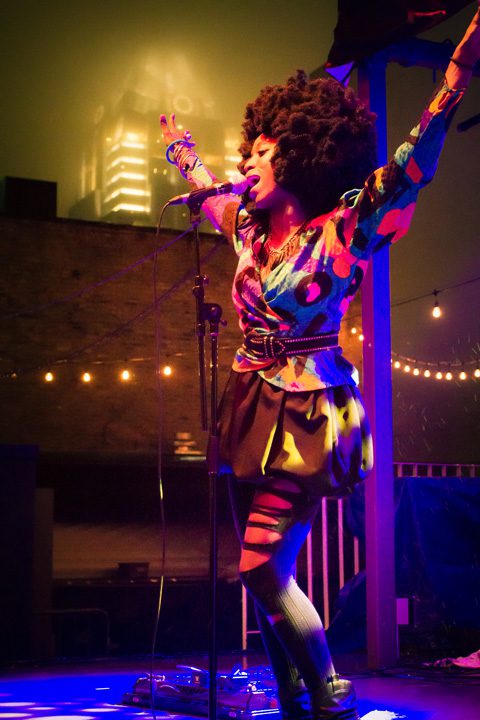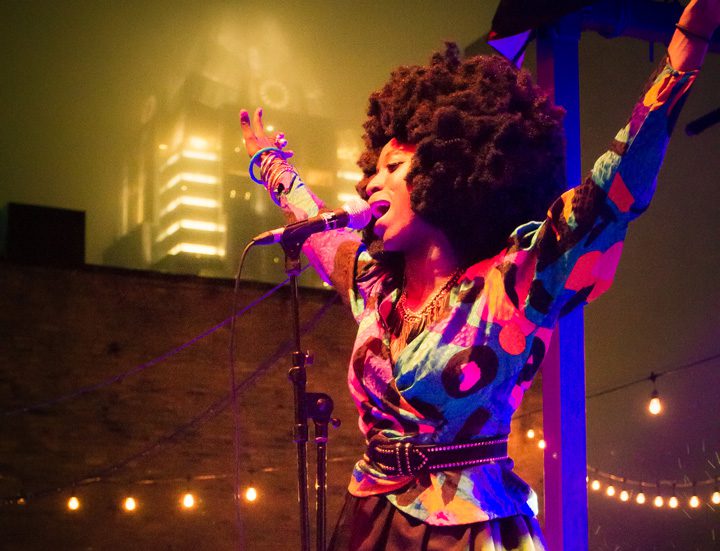Genres and the Nature of Influence
No musician can exist in a vacuum; most would agree that the songs and styles they love somehow work their way into the DNA of their music, whether readily discernible in the finished product or not.
These influences need not be strictly musical. Crain lists literary figures like D.H. Lawrence, Buckminster Fuller and Breece D’J Pancake alongside Jason Molina, Patti Smith and Joni Mitchell.
[pullquote]It’s definitely a shock to lots of people, at least to the areas that I’ve traveled performing music, that I’m from Tulsa. People don’t expect it.”[/pullquote]
Others are almost impossible to predict.
McPherson describes himself as “a big Madonna fan.” Moreland speaks, with some unexpected enthusiasm, of his affection for 1990s R&B artists like Boyz II Men, TLC and Mariah Carey.
“I listen to that stuff almost daily,” he says. “I don’t really sit down and go, ‘I’m going to write a song like Boyz II Men,’ but it probably is subconsciously influencing me in some way.”
Moreland himself has origins in punk and hardcore, which he played in high school as a frontman of local bands. It was not until after graduation that he switched gears, embracing the music favored by his father – artists like Neil Young, Tom Petty and Steve Earle – but punk still lurks somewhere in his spirit.

“It’s not necessarily a direct influence on my music anymore, but just kind of the way I go about my business, my attitude and booking my own shows,” he says. “I still try to carry on that DIY ethic that I learned from being into ‘80s hardcore.”
McPherson points out that Oklahoma’s musical representatives are widely varied in aesthetic, adding that one should not judge an entire state on the basis of just a few artists.
“You’ve got everyone between Tommy Allsup and the Flaming Lips,” he says. “That’s a pretty wide spectrum.”
And no survey of Oklahoma musicians would be complete without some consideration of the soul and R&B scene, which finds a worthy emissary in Tulsa-based singer Branjae.
She sees her style as a mesh between genres, with elements of jazz, rock and funk co-existing with the unmistakable influence of Chaka Khan, Diana Ross and Whitney Houston. She is also an ardent fan of local folk singers and describes Tulsa as a kind of crossroads of sound, defined in no small part by its location.
“To me, living in Tulsa has sort of made me look around,” she says. “We’re right in the middle of everything.”
At the same time, she has encountered her fair share of false perceptions.
“Most people think that we’re still all country music, but we’re part country and part jazz and part rock and part blues and funk and soul and R&B,” she says. “It’s definitely a shock to lots of people, at least to the areas that I’ve traveled performing music, that I’m from Tulsa. People don’t expect it.”
For Branjae, music is an invaluable cultural tool by which horizons are broadened and barriers eliminated. This applies not only to those who may listen to her work, but also to her enjoyment of other artists’ work.
She stresses the importance of avoiding prejudgment – whether that means a listener prejudging a performer, or an artist prejudging an audience.
“Just relax and enjoy it,” she says.
To that end, she has gone out of her way to perform in places like smoke-filled biker bars whose musical inclinations are overwhelmingly country. She mentions a specific instance in which the mood in the room “went from weird energy to ‘we got the party started’” as an audience unaccustomed to her chosen idiom quickly warmed to her soulfully expressive vocals.
“We definitely won over some crowds,” she says.
“Born an entertainer,” Branjae has played professionally for 10 years, during which time she has witnessed significant growth in the live music scene, with an ever-increasing number of venues and more interest from the local community – an upswing she is confident will continue, she says.
It pays to be optimistic in this business.























